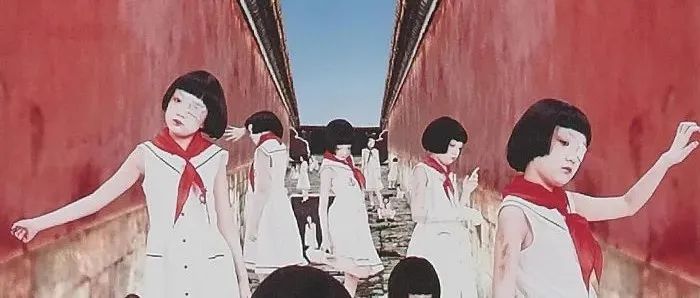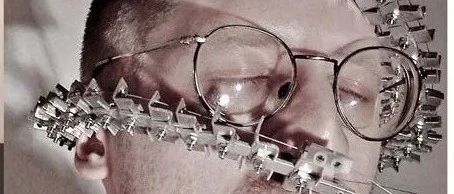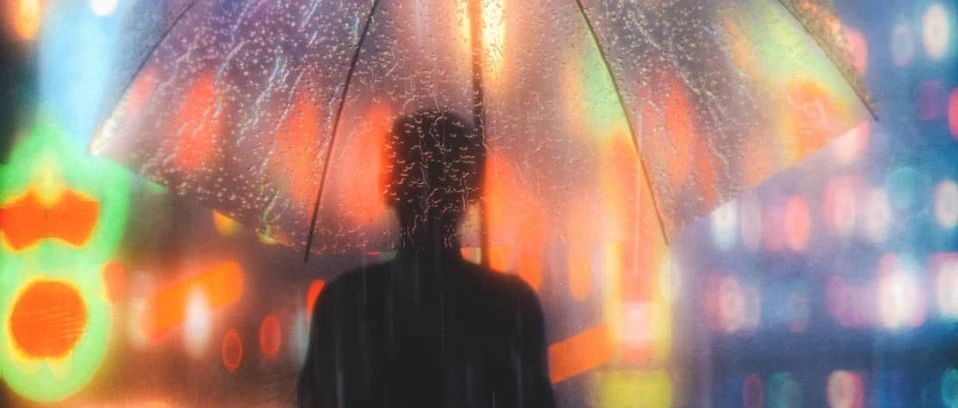“At the end of the day, I think about things from the perspective of human nature.”
“归根结底我是从人性的角度来思考问题。”
—Cui Xiuwen 崔岫聞
About artist
关于艺术家

Cui Xiuwen, born in Harbin, earned degrees from the Central Academy of Fine Arts in 1996 and the Northeast Normal University’s Fine Arts Department in 1990, respectively.
崔岫聞,哈尔滨人,1996年毕业于中央美术学院,1990年毕业于东北师范大学美术系。
Her accomplishments have been widely regarded and profoundly acknowledged by worldwide contemporary art authorities as one of the great female representatives of Chinese contemporary art. She is the first Chinese artist whose works have been shown at the Tate Gallery in the UK, and the Centre Pompidou in France has acquired a collection of her emblematic video artworks. The“2008 Xiao Shufang Art Fund Outstanding Female Artist Award” was given by the Wu Zuoren International Art Foundation to a female artist in China.
她的成就得到了世界当代艺术权威的广泛认可和深刻认可,是中国当代艺术的伟大女性代表之一。她是第一位在英国泰特美术馆展出作品的中国艺术家,法国蓬皮杜艺术中心收藏了她标志性的影像作品。 “2008萧淑芳艺术基金杰出女艺术家奖”由吴作人国际艺术基金会授予中国一位女艺术家。
Representative work: “Lady’s”
代表作:《洗手间》
Although it is a contentious piece of art, it depicts the experience of women in contemporary society. Cui Xiuwen received an invitation to the most exclusive nightclub in Beijing in 2000 from a collector. She was taken into an illusion upon entering the space and mistakenly made her way to the toilet. People in the restroom organized the make-up or interacted with one another. Some people continued to discuss their money, and a sense of competitiveness could be seen in their speech. The constant giggling and yelling between them indicated that these girls were engaged in illegal sex trafficking.
这是一个具有争议性的作品,但背后却展现了现实社会中的女性经历。在2000年,崔岫闻受到一位收藏家的邀请,前往当时北京最豪华的夜总会。入场后,带给她的只有不真实感,不知不觉她走向了洗手间。在洗手间内的不是在整理仪表,就是在彼此打量,有的还在谈论收入,言语之间还透露出竞争的意味。从她们之间不断的咯咯笑声和大喊大叫中,我们可以看出这些女孩正在从事非法的性交易。

Cui Xiuwen referred to the situation of women in the restroom as“preparing for combat.” The restroom is a public space that blends privacy and desire, and what happens there may completely illustrate women’s sense of social identity and social experience. This aroused Cui Xiuwen’s great curiosity.
崔岫闻在用“备战”来形容在厕所里女性的状态。洗手间里所发生的事情能够充分展现女性在社会上的身分感和社会经验,而洗手间更是一个结合了隐私和欲望的公共地方。这勾起了崔岫闻极大的好奇心。

Taking these investigative yet invasive photos, the artist boldly morphs their intensity and narrative through various digital mediums such as video and digital photo collages.
通过这些具有调查性但具有侵略性的照片,艺术家通过视频和数码照片拼贴等各种数字媒体大胆地改变了他们的强度和叙事


Rather than a single interpretation, her work can express several layers of meaning. However, these are all drawn from the substance of the work and are not provided by the author on the work.
她的作品不止是有单一的解释,而是能够表达多层含义。但是,这些都是取材于作品的实质内容,并不是作者赋予在作品上。
The work “Sanjie” is a reference and re-conception of Leonardo da Vinci’s iconic painting “The Last Supper.” She substituted uniformed girls for the original figures, the Twelve Apostles.
作品《三界》是对达芬奇标志性画作《最后的晚餐》的借鉴和重新构想。她用穿制服的女孩代替了最初的人物十二使徒。



Cui Xiuwen’s works retain the original characters’ attitudes that are still present. This character’s gender transformation prompts several ideas. The original book of the Bible, which has always been a patriarchal culture, tells the biblical tale from the viewpoint of the male characters. Few female characters appear in the Bible, and when Cui Xiuwen changed these characters’ roles, she explored whether women’s roles and status in society have changed through time. In “Sanjie”, whether the helpless expression on the girl’s face is reflected, women still feel like they have no choices and are helpless in modern society.
崔岫闻的作品保留了原著人物本来应有的态度。这种人物的性别转换不禁让人产生几个想法。原著中所讲述的圣经故事,圣经中一直处于父系社会,当中描述的都是从男性角色视角所发生的事迹。在圣经中的女性角色少之又少,而崔岫闻将这些角色转换后,让我们思考女性在当时社会甚至现在的定位和角色,是否有所不同。在《三界》中看到,女孩一脸无奈的表情,是否有体现出来,女性在现代社会中依然感到无奈和无助。
In addition to using her scathing and darkly comic artistic skills to transform biblical tales into modern works of art, Cui Xiuwen also debunked the fallacy of her own subjective understanding in her philosophical studies.
崔岫闻再次用她讽刺中带有黑色幽默的创作手法将圣经故事变成当代艺术作品,并在她的哲学研究中,她也驳斥了自己主观认识的谬误。
“One Day in 2004” series
《2004的某一天》系列
The model for the piece is still the small girl from “Sanjie”, a youngster costumed as a schoolgirl walking down a solitary street in the Forbidden City with a clear sky in a shot from her 2004 series “One Day in 2004.”
作品依旧以《三界》中的小女孩为模特。在她 2004 年的系列“2004 年的一天”的镜头中,一位扮成女学生的年轻人走在紫禁城的一条孤独的街道上,天空晴朗。

Cui Xiuwen employs several traditional cultural allusions in this piece as well. The architecture, for example, is evocative of old Chinese dynasties and patriarchal norms; the bright sky is prevalent in Western art but uncommon in Chinese art.
崔岫闻在这件作品中也运用了几个传统文化典故。例如,这座建筑让人想起中国古代朝代和宗法规范;明亮的天空在西方艺术中盛行,但在中国艺术中并不常见。

She also used a little girl who is the protagonist and who is encircled by strong walls. Perhaps the message portrayed is that women in this culture are constantly weak and defenseless. The girl in this series of paintings likewise lacks a grin and even has some injuries on her body, which notably demonstrates the frail and delicate aspect of women.
她用年轻女孩作为主角,被高墙包围。想表达的可能就是女性在这个社会中永远都是渺小和脆弱不堪。在这一系列的作品中我们还能够看到,女孩的脸上并没有挂着笑容,甚至身上有一些淤青,格外的表现出女性的弱不禁风和柔软的一面。

With several iconic things included in the works, this collection of works is sarcastic and replete with distinct memories of the 1970s. Girls’ clothing, for instance, served as a fashion statement during the period, and the palace symbolized a strong China. The collection combines aesthetically pleasant images with figurative logos that obscure possible issues.
这系列的作品具有讽刺意义并充满了1970年代的独特记忆,有很多代表性的物件出现在了作品当中。例如女孩的衣着是当时的潮流标志,而宫殿代表了当时实力强大的中国。该系列融合了令人愉悦的视觉效果和象征性的标志,隐藏了潜在的冲突。
In her view, female artists are a social label, but art has nothing to do with gender.
在她看来,女性艺术家是一个社会标签,但艺术与性别是没有关系的。
In Chinese society, women do often have a lesser standing, particularly in a traditional culture where they typically have roles like wives, concubines, or slaves. Even though women make up the majority of Cui Xiuwen’s characters, she frequently emphasizes that social status is a problem that affects everyone. This not only shows gender inequity but also calls into question the social order.
传统上,女性在整个中国社会中的地位确实较低,尤其是在传统文化中,她们往往处于配偶、妾或仆人等位置。崔岫闻的作品虽然主角大部分为女性,但一再强调社会地位的问题并得局限于女性。这不单单是反映了性别中的不平等,更上升至了社会整体平衡的问题。
Cui Xiuwen still hopes that via her works, women would be motivated to pursue their own independence and personal growth. In this situation, the public may examine and comprehend a greater range of opinions from diverse angles thanks to the educational benefits of art.
尽管如此,崔岫闻仍渴望她的创作能够激励女性争取自主和个人发展。在这种情况下,艺术能够起到很好的教育作用,使大众能够有多元化的视角分析和理解更广泛的观点。
*all images and artworks belong to the artist & his representing galleries respectively
*所有图像和艺术品分别属于艺术家及其他们代表的画廊
Translation 翻译 Alice Yip
FOR MORE RELATED CONTENT
本篇文章来源于微信公众号: SHMADNESS








